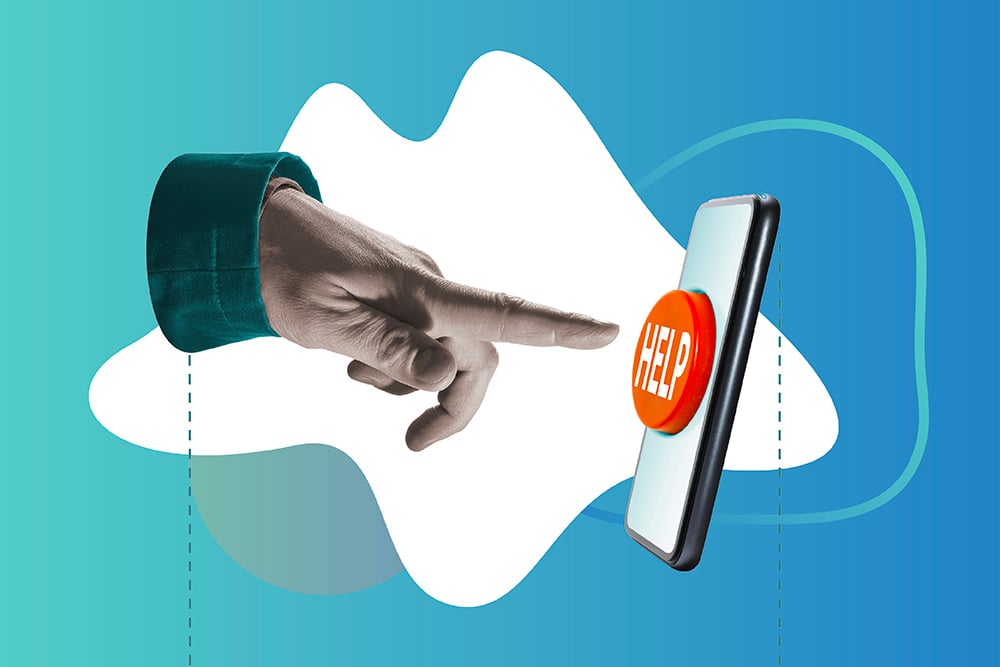Self-Service Customer Portal: What It Is and Why You Need One
In the field service industry, the customer should always be number one. By providing personalized digital experiences, access to real-time...

As a business professional, you know that delighting your customers is important. However, there is quite often a misunderstanding about the impact that a positive customer experience can exert on your bottom line - now, and in the future. According to research by Deloitte, delivering a positive customer experience can reduce your cost to serve customers by up to 33%; moreover, customers who enjoy positive experiences are likely to spend 140% more than customers who report negative experiences and are likely to remain customers for five years or longer than those with negative experiences.
Acquiring and retaining long-term customers is of critical importance to your business’s success. During a crisis, your field service technicians are interacting with customers in high-stress and impressionable situations, and there is little room for error.
Customer experience is the impression you leave with your customers, resulting from multiple touchpoints across every stage of the customer journey. As Bill Pollock explains in the white paper, Supporting the End-to-End Customer Journey by Providing Seamless Service & Support, positive customer experiences require seamless support throughout every facet of the product life cycle following the sale - from product registration and warranty support; to onsite, remote and self-service support; to preventive maintenance - all the way through product upgrades and add-ons, and end-of-life product placement and disposal. This is a comprehensive process that focuses on reducing friction wherever possible and providing the customer with easy, effective, and enjoyable experiences that encourage them to both think and speak highly of your organization.
Customer experience is critical to sustaining the growth of a company by helping retain revenue and earn new customers. By building positive relationships with your customers and fostering brand loyalty and affinity, you can encourage positive customer reviews and can develop a significant reputation in your field. Customers are your best resource for increasing brand awareness in a positive light, and this influence should not be underestimated. With a positive emotional experience, customers are six times more likely to buy, twelve times more likely to recommend the company, and five times more likely to forgive a mistake.
Currently, customer experience is the main focus for the majority of business leaders in the field. According to a 2019 JCurve case study, 81% of executives surveyed place the personalized customer experience as one of their top three priorities, with 39% reporting it as their top priority. Establishing an exceptional customer experience in normal working conditions is certainly not an easy task, but crisis conditions make it even harder to perfect. Crises can trigger changes in customer needs and behaviors that can shift their customer journey and can require new strategies in order to best approach this heightened anxiety, stress, and uncertainty.
Crisis situations may impact your customers in unprecedented ways, which means your technicians need to embrace empathy and offer support whenever possible. Start by demonstrating that your technicians are caring and reliable partners to your customers, and not just a one-off company servicing their appliance or HVAC unit.
Above all else, strive to understand how your customers are feeling at this moment. During a crisis, your customers’ needs are not the same as they were before. By leveraging mobile forms to conduct customer surveys, you can gain real-time visibility into the changing voice of your customer. This allows you to respond in a timely manner and pivot your strategies to overcome any new pain points or frustrations.
Leveraging field service management software is the easiest and most effective way to gain visibility into your customers’ needs and develop an understanding of the voice of your customer. For instance, ServicePower’s customer portal has fully custom self-service capabilities that connect with the end-user, allowing them to engage on their own terms. Additionally, you can proactively reach out to your customers, automate timely customer surveys, and provide real-time communication to answer any urgent customer needs. This friction-less process delights customers and results in an increasingly positive customer experience. For instance, field service organizations that implemented ServicePower’s software suite experienced a 27% increase in Net Promoter Score, which measures customer experience, and a 15% increase in customer satisfaction.
2. Provide Consistent CommunicationConsistency in a time of crisis has a calming effect and can provide your customers and technicians with a sense of security. Consider implementing daily and/or weekly communication updates to touch base about any new safety protocols that may have surfaced and demonstrate that you are alert and informed.
As a field service leader, it is essential for you to ensure that all of your internal communication is clear and consistent regarding crisis terminology in order to deliver the safest service possible. Small confusions can result in serious harm for both your technicians and your customers, and can easily be avoided with vigilant and detail-oriented processes.
External communication is even more important during a crisis, which can pose extra difficulties with maintaining your brand reputation and ensuring a positive customer experience. This means that each of your technicians must align with your safety protocols, and brand voice, and represent your brand values regardless of who the message is coming from. When managing a blended workforce, aligning your brand voice across technicians and employees can be a complex process, but intelligent workforce management software helps ensure timely communication and feedback to guarantee that your team is consistently representing your brand safely and accurately.
3. Remove BarriersAs circumstances change during a crisis, there may be new sources of friction and frustration within the customer journey that prevent you from providing a positive customer experience. In order to pivot your strategy, you need to understand where any new barriers are located in the customer journey and innovate ways to remove them. This goes back to understanding your customers’ voice at this moment and understanding the significant changes in your customer experience.
By removing barriers and redundancies, you make your services more accessible and easier for your customers to navigate. For instance, providing Augmented Reality remote troubleshooting removes the barrier of physical interaction, allowing your customers to access your wealth of knowledge without assuming the risks associated with a physical appointment. The self-service functionality of the ServicePower customer portal encourages this type of flexibility, by allowing customers to engage from anywhere at any time. While removing barriers is important to reducing friction on the customer side of service, it is also necessary to revise your internal approach to service.
4. Adapt to New ConditionsAs new challenges arise, your internal processes must adapt to protect the safety of your customers and your technicians, and ensure a seamless customer experience. Outdated operations disrupt the effectiveness of your service and ultimately decrease the value of your customer experience. Conversely, continuously informing your service processes with new information as it arises allows you to provide the most innovative and enjoyable service possible.
ServicePower’s scheduling and route optimization software dynamically changes business rules to exclude geographical hotspots for COVID-19 and provides the safest and most effective routes for your technicians. The communication portal also allows for real-time updates so that every member involved in an appointment can stay informed about any relevant changes. This allows you to continue servicing your clients without creating any negative friction in the customer journey while prioritizing safety and performance. The ability to adapt to these changes is integral to crafting a positive customer experience during a crisis and can be the deciding factor in satisfying new safety protocols.
5. Treat Your Team WellDuring a crisis, your employees and contractors are enduring elevated levels of uncertainty and anxiety, as well as an increased level of stress directly from your customers. As a leader, it is up to you to help mitigate this trauma and make sure that your team has access to the appropriate resources they need to do their jobs safely and efficiently. ServiceEmpowerment does just that. The intelligent software suite empowers your technicians to drive ownership within route and schedule adherence, the ability to triage parts needed to complete the job, access to collaboration tools to adjust calls based on parts availability, and the capacity to directly order and deliver parts based on the preferred location.
By arming your team with the tools and information they need to do their jobs well and allowing them to take control of their own work, you remove friction within your own organization. This creates a better work environment overall and sends happier and healthier technicians to service your customers. Treating your team well is an easily overlooked aspect of creating a positive experience for your customers, but your customer service is only as good as your technicians’ health and productivity.
Improve Your Field Service Success
When evaluating your customer experience during a crisis, increasing your first-time fix rate should be to be top of mind. The leading global insurance organization, AIG, increased its first-time fix rate by 40% and decreased site on time by 20% after implementing ServicePower’s field service management suite.
Explore how Augmented Reality tools can help improve your customer experience.

In the field service industry, the customer should always be number one. By providing personalized digital experiences, access to real-time...

In the field service industry, most companies aim to delight their customers by providing service excellence. While this may sound simple enough,...

Quite often, the terms customer experience and customer service are used interchangeably. While they are related, they are not the same thing. In...